Every year at the harvest I go pick what’s left in the fields of D-Trois Pierres and come back to Montreal to can part of the harvest left-overs with the Réseau d’entraide and the other half with my dinner club. This year D-Trois Pierres didn’t have any surplus […]
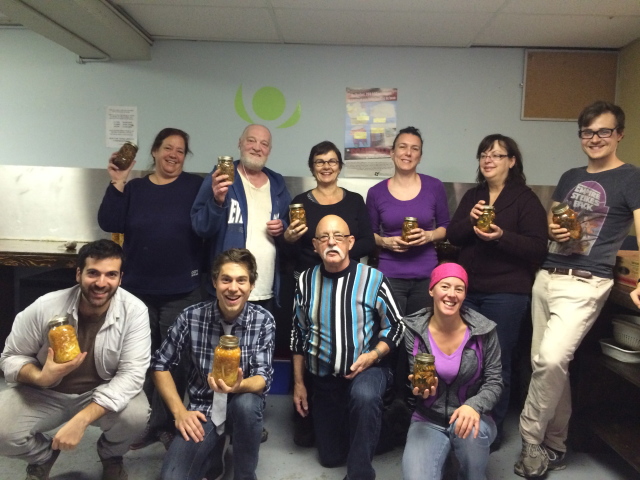
Every year at the harvest I go pick what’s left in the fields of D-Trois Pierres and come back to Montreal to can part of the harvest left-overs with the Réseau d’entraide and the other half with my dinner club. This year D-Trois Pierres didn’t have any surplus in the fields, so my whole model was thrown off kilter a few weeks before the end of the growing season. I have also been working part-time at Chez Doris (a day centre for homeless women) and giving cooking workshops once a month with CFAD (Continuité famille auprès des détenues). That meant that I had more partners to make preserves with and less produce to make it with!
I started by sending an e-mail to Lufa and thanks to the wonderful Erica Dancose who contacted their partners we received: cucumbers, peppers, carrots, beets amongst other things!
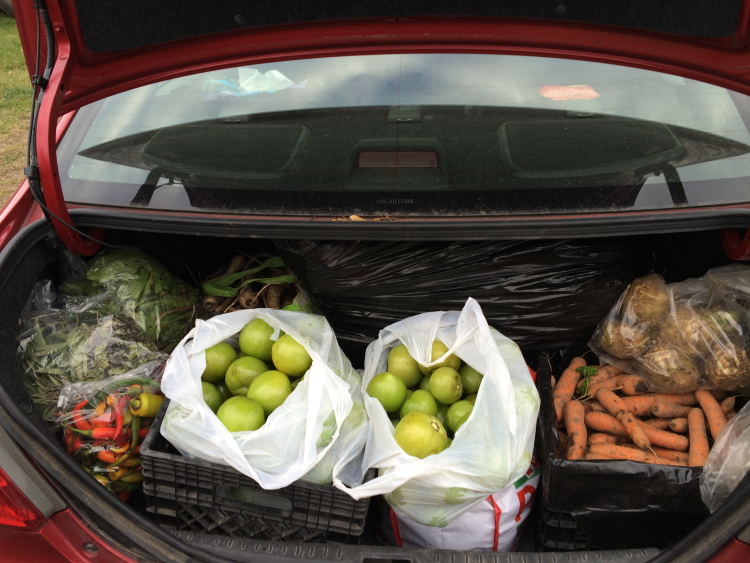
The Goods- Thank you to the farms that donated!
Then I got in touch with my close friend and celebrity organic urban farmer Judith Colombo and she hooked me up with La Ferme Belle Roche and La ferme co-op des Champs qui chantent in Lachute. We drove out with my mom who was visiting and picked parsnips, carrots, kale, herbs, swiss chard, green tomatoes, sorrel and hot peppers! Heather from Le co-op des champs qui chantent even had a hot bowl of soup for us! I think it was colder at the beginning of November than it is now!

Here is Judith Colombo farmer extraordinaire, my Mom and Dina Honke blogger at http://oliveoilandlemons.com/montreal-going-green-melissa/ all on the Montreal Living Table: healthy and sustainable food tour (on the roof of Santropol Roulant)
This year was bigger and badder. Changing farms and enlarging the different benefitting organizations allowed me to involve more wonderful people in the activities!
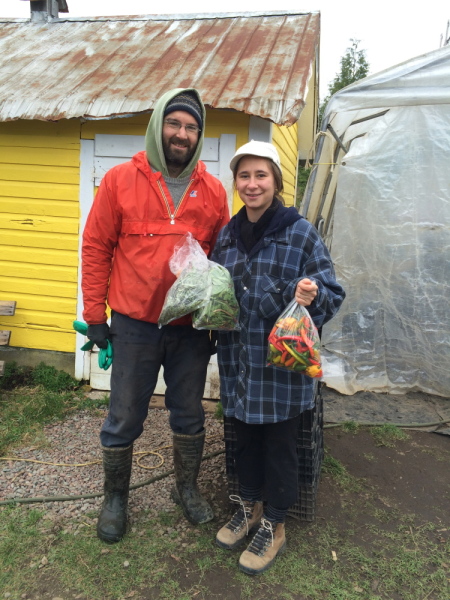
Simon from La Ferme Belle Roche and fresh herbs and hot peppers!
Our first day of canning with fresh, local, organic produce took place at the Réseau d’entraide de Verdun. We did it with Gabriel’s collective kitchen group, plus some of the former participants in my workshops, Suzanne Bruneau and Maxime Gaboriault from the dinner club and the esteemed secret weapon Sébastien Bureau of Mannanova who is also the food scientist of RISE kombucha. People left with a super garlicky and spicy kale kimchi fermenting, a ruttabega, cabbage and carrot kraut fermenting, salted herbs and a green fruit relish. There was 15 of us and it was such a heart-warming and pantry-filling experience.
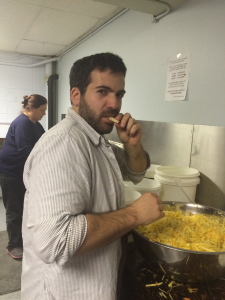
Sébastien Bureau- food scientist and fermentation guru…getting turned on by the turnip, carrot and cabbage kraut by the looks of it!
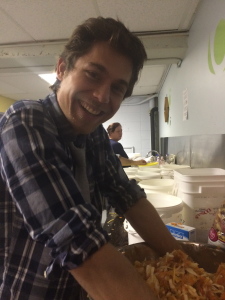
Gabriel- collective kitchen co-ordinator at the Réseau d’entraide who so kindly welcomed us in his fold to make preserves!

Heather: farmer and co-founder of Le Co-op des Champs qui chantent! Thanks for the beautiful vegetables!

Erica Dancose who managed to snag us a variety of veg to preserve from some of Lufa’s numerous partners!
The second preserve session was with ladies from CFAD and from Chez Doris at CFAD. We made chow chow and pickled carrots. We also had a nice time together and the staff from CFAD pitched in too.
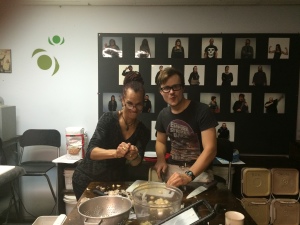
Dinner Club represent!
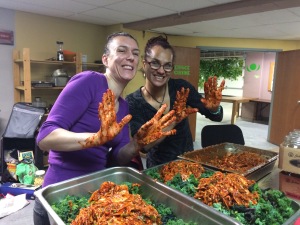
Kale kimchi- spicy and garlicky being joyfully mixed!
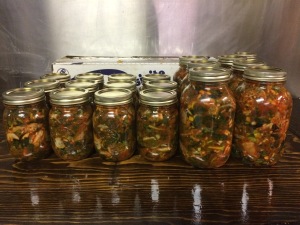
Kale Kimchi ready to ferment
I’d like to sincerely thank Le Co-op des champs qui chantent, Lufa and La Ferme Belle Roche for contributing fresh local, organic, in-season vegetables towards those who have less instead of the usual processed non-perishables, and also contributing to an experience where people learn about canning, salting, pickling and fermenting. Preserving is a highly social activity and it was nice to see people from each organization rubbing shoulders with each other, with dinner club members and even with Sébastien the food scientist! Thank you also to the organizations that housed the activity and contributed to cover the cost of the other ingredients and the mason jars! See you next year!
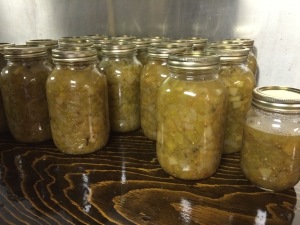
Green tomato fruit relish- Catsup aux fruits de tomates vertes
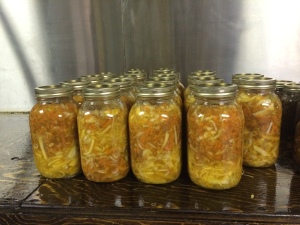
Turnip, carrot and cabbage kraut ready to ferment for 6 weeks!
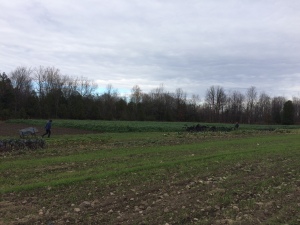
End of the season at le Co-op des champs qui chantent
The dinner club’s canning session was a success, but we also decided to do the first fermenting session. I took on the task of fermenting the cabbage, beets and kale as we couldn’t really spend 6 weeks together watching the process. I made real sauerkraut with the cabbage and did the […]
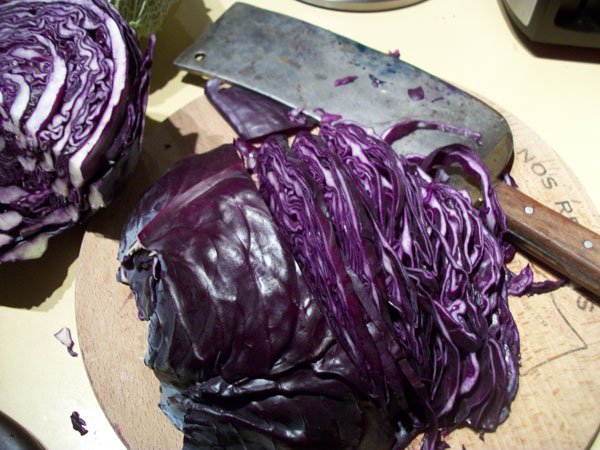
So much cabbage, so little time
The dinner club’s canning session was a success, but we also decided to do the first fermenting session. I took on the task of fermenting the cabbage, beets and kale as we couldn’t really spend 6 weeks together watching the process. I made real sauerkraut with the cabbage and did the same thing with the beets. For the kale, I made kimchi.
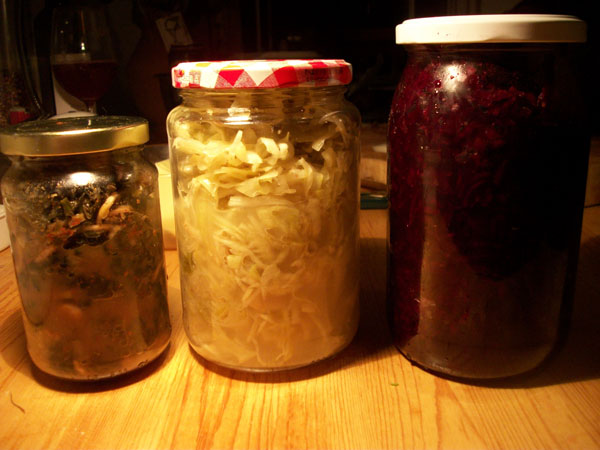
Kale Kimchi, Sauerkraut and beet sauerkraut
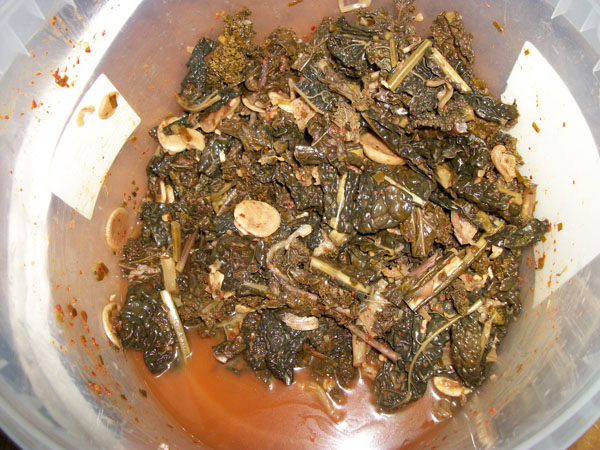
Kale Kimchi - The New Kimchi
Sauerkraut was first recorded by the Romans but came from the Orient. The method, however, was lost in Europe, but then re-introduced in Austria in the 13th century by the Tartar hordes, who had acquired it from China.
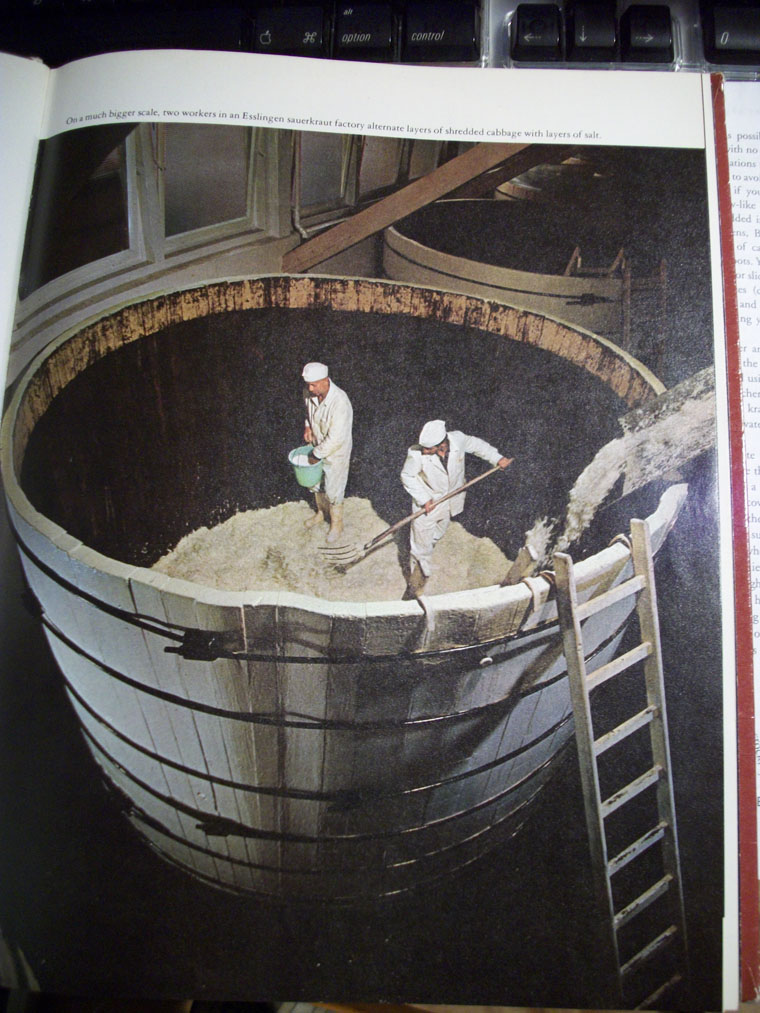
No those are not oompa loompas- they're life-size Germans in a celestial-size bucket of sauerkraut making sauerkraut in...a sauerkraut factory! This is from Time Life's Book about "The Cooking of Germany" (1969)
Sauerkraut is old, and fermentation older. Fermentation helps digestion, it preserves nutrients and food and produces delicious and pungent results. Doing it yourself doubly preserves the vitamins and beneficial live cultures that result from fermentation, as when store-bought, products are often pasteurized (heated to high enough temperatures to kill the good stuff). Micro biodiversity also gives our immune-system the challenges it needs to come up with more complex solutions, ie, live cultures keep our immune-system on its toes and in-shape.
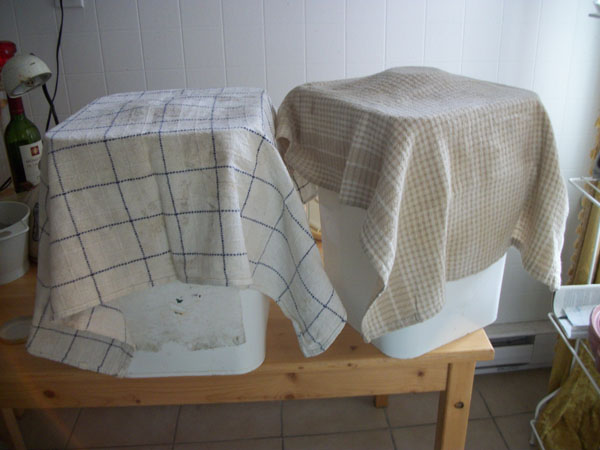
Beet and cabbage sauerkraut veiling their most sensual trait- their microbiodiversity.
Here are the instructions for straight-up sauerkraut made with cabbage or beets, fast sauerkraut (the cheater way, not as nutritious, but still delicious), a sauerkraut soup recipe, my great Grandma’s sauerkraut salad recipe, British pickled cabbage, and, lastly, a video I made explaining how to make kale kimchi.
Sauerkraut
3 tbsp of salt per 2 kg of cabbage (you could also use beets, carrots or other root vegetables)
You will also need:
a container to put it in
a plate that fits snugly in the container
Something to weight it
A Tea towel
A Sterilized or well-scrubbed weight (A big jar of something)
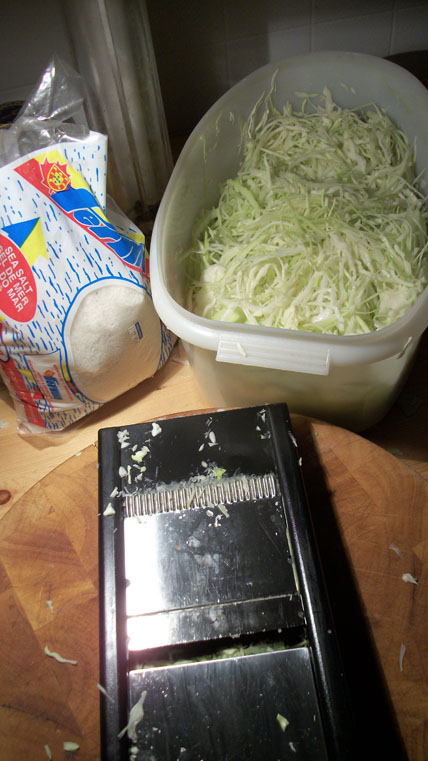
Mandolin to shred, salt to preserve, cabbage for vitamin C
Shred the cabbage, put it in a food safe, non-reactive receptacle with the salt. Put the plate on top, weight it and cover it with a tea towel. After 24 hours add enough salt water (1 tbps of salt for 1 cup of water) to cover the plate. The brine keeps the kraut from the air and spoilage. Check every few days and skim off the “bloom” (usually mold).
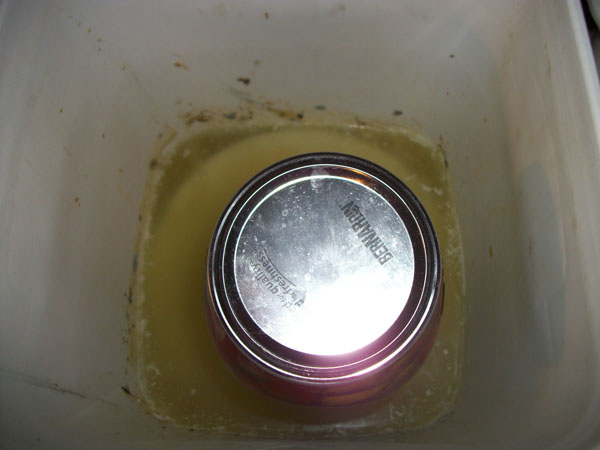
Sauerkraut weighted and in brine with a bit of "bloom".
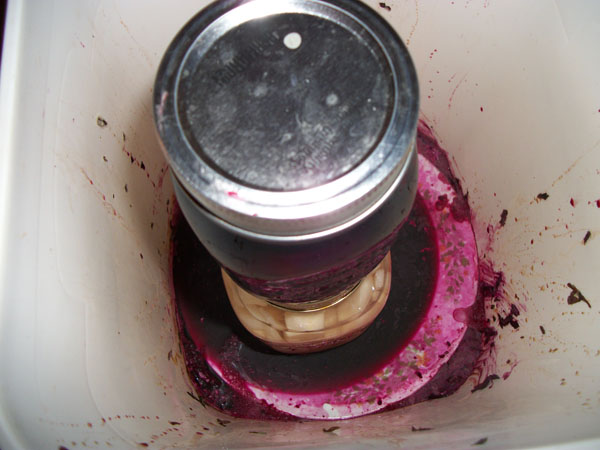
Beet sauerkraut- exactly the same process. I highly recommend Sandor Ellix Katz's Wild Fermentation on the subject of fermentation.
Cheater Sauerkraut
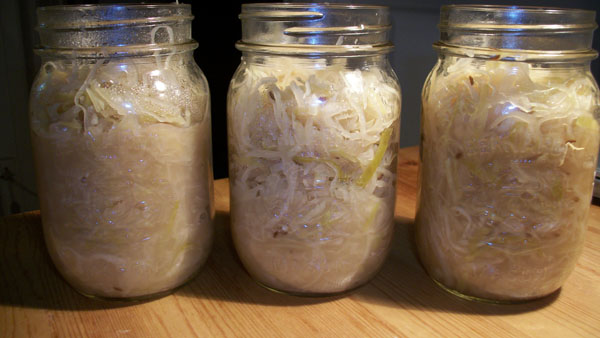
Fast sauerkraut- Just about like the real thing
If you’re not up for 6 weeks of fermenting cabbage, this is the cheater way. You will not get the health benefits, but it will still taste really good.
1 onion, cut in half and then finely sliced
1 head of green cabbage, shredded
2 tbsp of salt
1 c. of cider vinegar
1/2 c. of cider, beer, or white wine
1 tsp of caraway seeds
Mix the cabbage and onion with the salt and let it sit covered for at least 2 hours, up to 24 hours. Drain. Put in a pot and simmer 45 min.
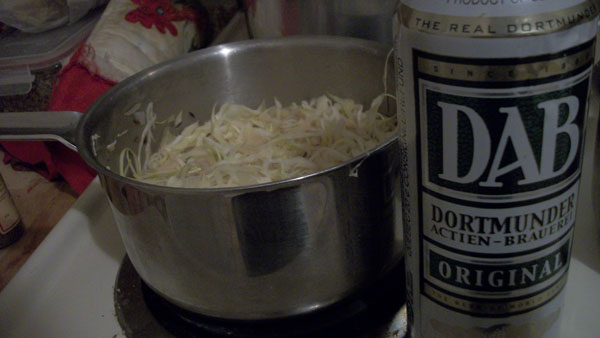
This one was made with beer, but I like it even better with cider
Sauerkraut Soup Recipe
This recipe was sent to me by Melissa Denecke in Germany, who is a member of two dinner clubs in Germany! I met her on a cycling tour of Montreal with Fitz & Follwell. The soup is very original and surprising. Although I don’t have the food porn to convince you, I really recommend you try it.
300g of sauerkraut
1 onion, finely chopped
1 tbsp of butter
1 small can of mandarin oranges and its juice (I used fresh mandarins and 2 tbsp of freshly squeezed lemon juice)
500 ml of chicken stock
salt
pepper
1 tsp of dried ginger (I used 1 tbsp of fresh ginger)
1 tbsp of honey
300g of crème fraîche (or you can use a mix of cream and sour cream)
Sauté the onion with the butter until soft. Add everything but the crème fraîche. Simmer on low heat for 45 min. Add the crème fraîche and purée with a hand mixer.
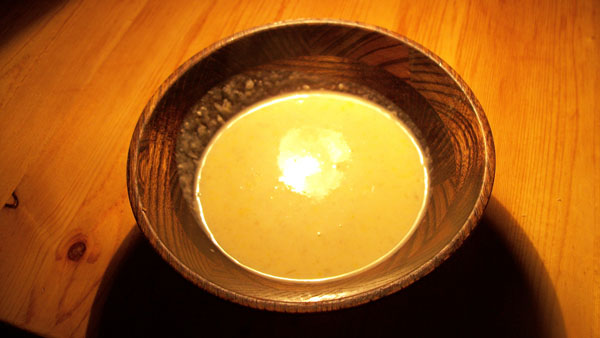
The photo is very non-chalant, but this soup isn't! It's very unique, and provides an unearthy sensation
Sauerkraut Salad
I worked as a cook in a tree-planting camp in the summer of 2010. It turns out that my Great Grandma Elsa Lamarr was a logging camp cook for many years and this was one of her recipes.
A 1 kg jar of sauerkraut, rinsed
1/2 c. of chopped celery
1/2 c. of chopped peppers
1 c. of chopped onions
1 c. of honey (I use 1/2 c.)
1 c. of vinegar (I use 1/2 c. of cider vinegar)
salt and pepper
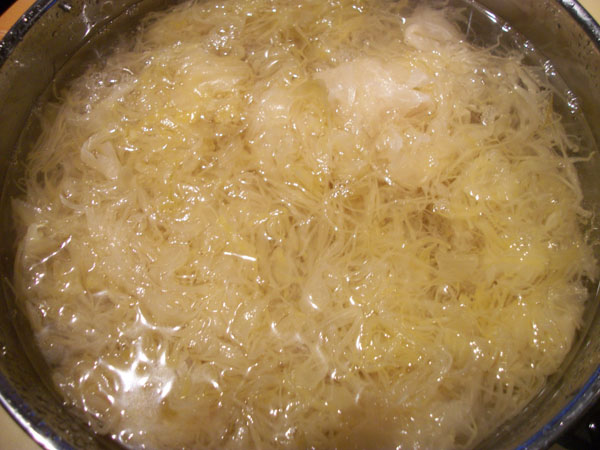
Rinsing the sauerkraut gets some of the the salt and acidity out
Combine all of the ingredients and let it marinate at least 45 min before serving. This is really good with a hot dog.
Pickled Cabbage
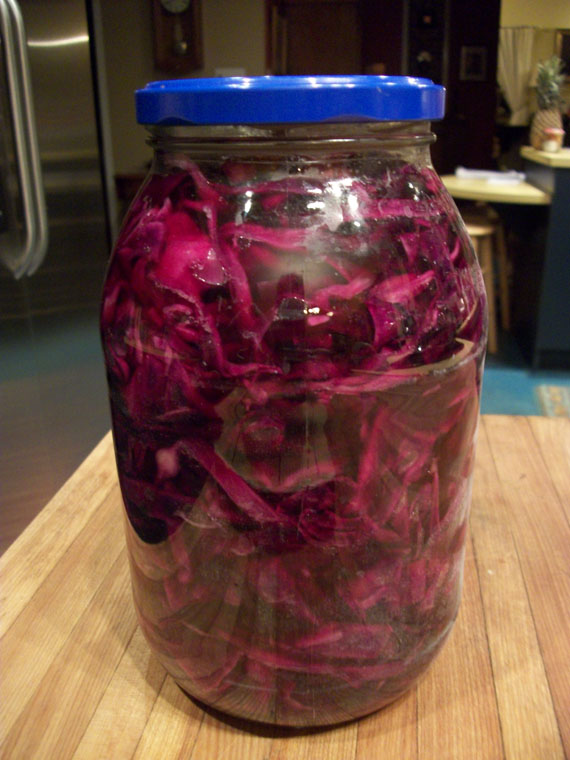
Canned Pickled Red Cabbage
This is yet another fast way to conserve cabbage. It is delicious. You can serve it with a roast, fish, or use it as you would sauerkraut. It is a British recipe, but I put a lot more water to make more of a vinegar brine than a straight-up vinegar marinade. Do it as you prefer.
2 red cabbages (about 3kg), shredded
6 tbsp of coarse salt
1 L of malt vinegar (I use 500ml of malt vinegar and 500ml of water)
1/4 c. of sugar
2 tbsp of pickling spice (Here I also improvise, using a variety of seeds and herbs: coriander, cumin, dried chilies, juniper berries, whole all-spice, mustard seeds, peppercorns, bay leaves)
Arrange the cabbage in three layers in a non-reactive container, putting 2 tbsp of salt between each layer. Cover it and let it sit for 2 days, stirring it a few times each day.
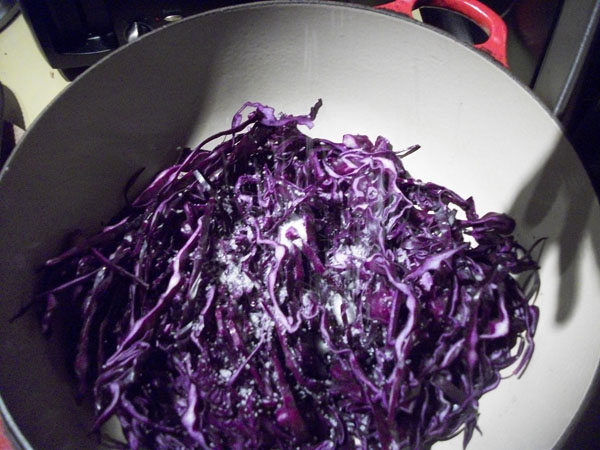
Salting the layers of cabbage
On the third day, combine the marinade ingredients in a saucepan and bring to a boil. Boil briskly for 5 min. Meanwhile, drain the cabbage. Put the cabbage in sterilized jars. Strain the marinade or leave the spices in if you like the look of it in the jars. Pour the hot marinade over the cabbage and close the jars. Wait at least 3 days before eating.
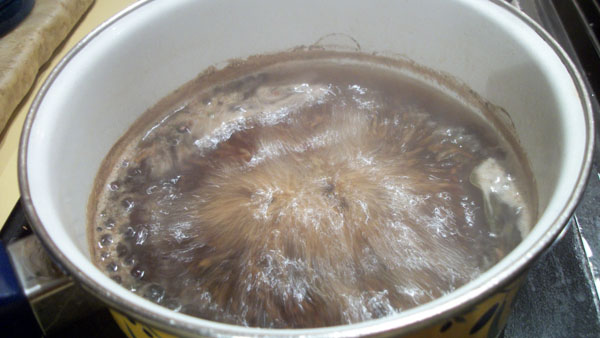
Pickling liquid- make it more vinaigary or less and use the spices you fancy, but please keep the malt vinegar.
One more idea….
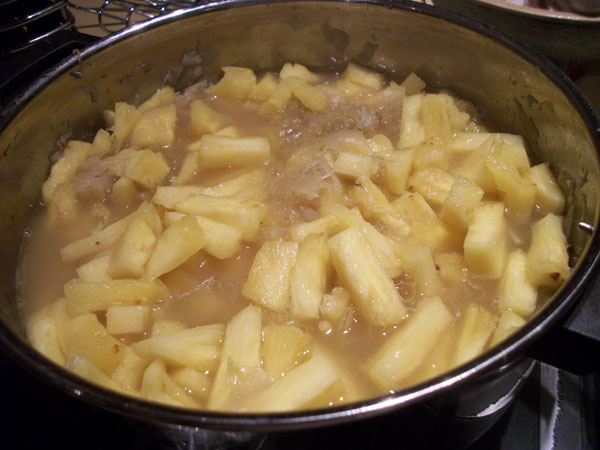
Pineapple sauerkraut!
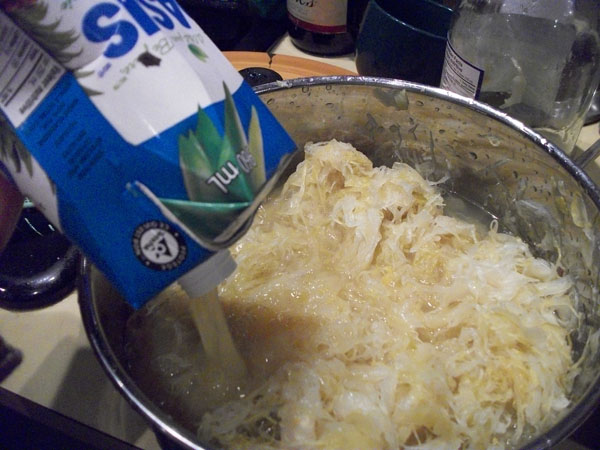
Rinse your cabbage and simmer it with pineapple juice for about 2 hours

Add pineapple in before serving
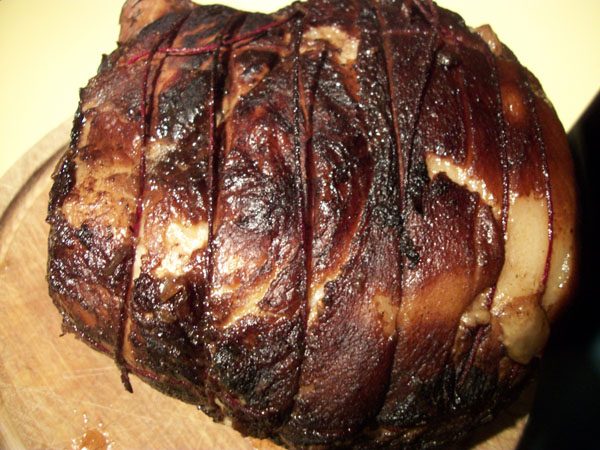
Pinepple sauerkraut is delicious with...a homemade ham!
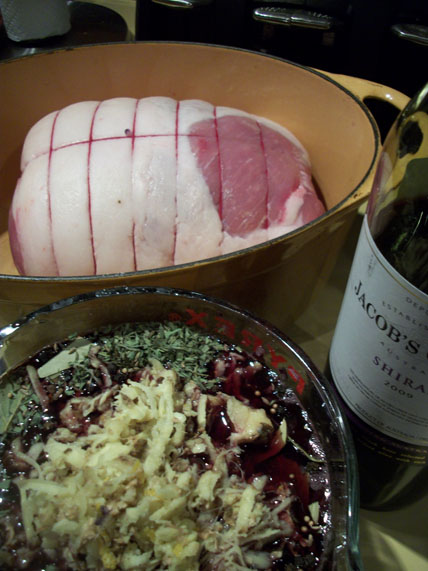
Brine the ham with red wine, salt and spices, zest, fresh ginger for 3 days
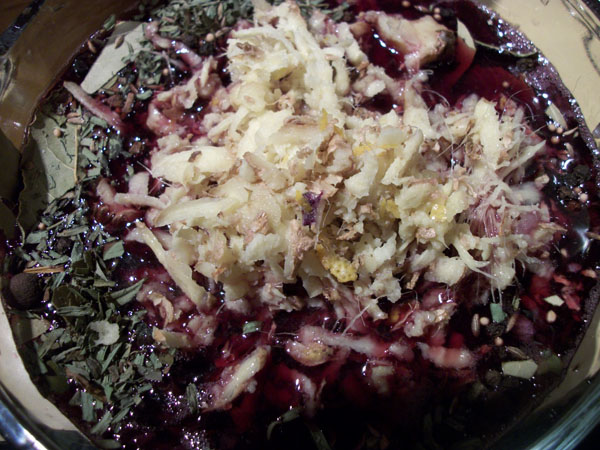
Strain the brine mix, sear the ham, and then braise at a low temperature in the strained liquid for a few hours.
Enjoy the pineapple sauerkraut and ham your-style.
Kale Kimchi
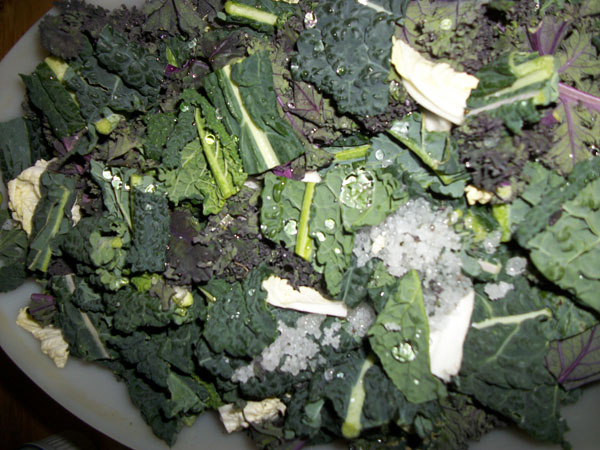
Kale Porn Picture - See video below for unsexy clinical instructions
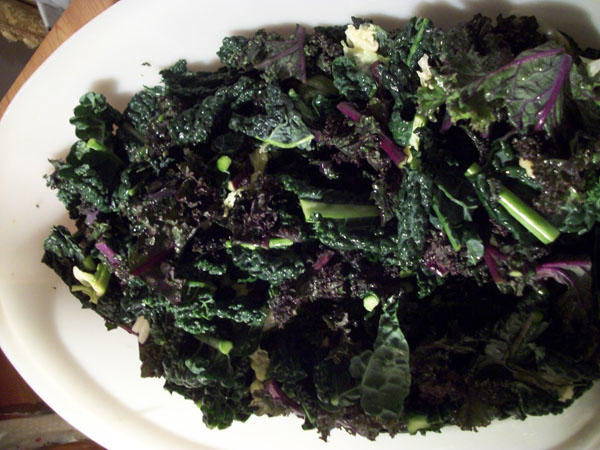
After salt- Dripping with sweat- More kale porn- please consult video
Just as a side note – I’m a lot spunkier than that in real life, but I was nervous. It was my first experience on film, and it was for a contest to win a trip to Korea. I was trying to look really Canadian with my sweater, but I just made Canadians seem really awkward….Enjoy! The video is below:
CATEGORIES
Archives
- February 2022 (1)
- October 2020 (2)
- September 2020 (1)
- January 2016 (1)
- January 2015 (1)
- October 2014 (1)
- February 2014 (1)
- January 2014 (1)
- July 2013 (1)
- June 2013 (2)
- May 2013 (1)
- March 2013 (1)
- February 2013 (2)
- November 2012 (1)
- September 2012 (1)
- June 2012 (2)
- May 2012 (1)
- April 2012 (1)
- March 2012 (1)
- February 2012 (1)
- January 2012 (2)
- December 2011 (1)
- November 2011 (4)
- October 2011 (4)
Popular Tags
'Round Table Tours Asian breakfast business prolfiles cabbage canning Community Europe Events farms fermentation Fitz & Follwell Food & Story Food history Food Production food tours fresh juices Friends gastronomy health herbs History Italy kimchi Meal exchange Nuart organic preserves public Quebec restaurant Rumble & Shakes Réseau d`Entraide de Verdun salt smoothies spicy Tours de la Table Vegan youtube videos

